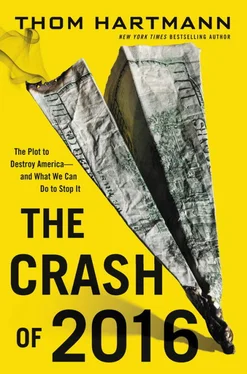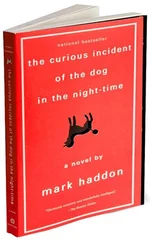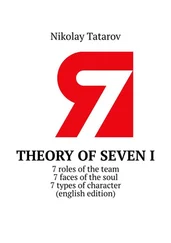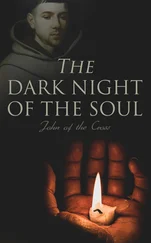They are places like Camden, New Jersey, which is the poorest city per capita in America. Hedges calls it “a dead city.” He adds, “There’s nothing left. There is no employment. Whole blocks are abandoned. The only thing functioning are open-air drug markets, of which there are about a hundred.”
There are also the “sacrifice zones” of West Virginia, where mountaintop mining is poisoning local populations with sky-high cancer rates, and crippling the environment. Hedges says the Royalists are “rendering the area a moonscape. It becomes uninhabitable. [They are] destroying the lungs of the Eastern seaboard. It’s all destroyed and it’s not coming back.” 11
There are places all across America that have already crashed.
Hedges warns that “because there are no impediments left” in this cancer stage of capitalism, then “these sacrifice zones are just going to spread outward.” 12
Like Gary, Indiana, which used to be home to buzzing manufacturing plants, but is now a ghost town after those plants were all outsourced to low-wage nations. Half of the population has left the city, and it’s one of the ten most violent in America.
This is what crash looks like.
Or it looks like Chicago, Illinois, where the effects of wealth inequality have unleashed unthinkable violence on the streets. There are an estimated 100,000 gang members in the city, according to the Chicago Police Gang Enforcement Unit. 13
This crash is coming. It’s inevitable. I may be off a few years plus or minus in my timing, but the realities of the economic fundamentals left to us by thirty-three years of Reaganomics and deregulation have made it a certainty. We are quite simply repeating the mistakes of the 1920s, the 1850s, and the 1760s, and we are so far into them it’s extremely unlikely that anything other than reinflating the recent bubbles to buy a little time here and there will happen.
While the task ahead is daunting, and the prospects for recovery may seem bleak, you will find out what each of us can do to ensure that this Fourth Crash—like the previous Great Crises—ends with the United States of America being, to quote the Constitution, “a more perfect union.”
Part 1 of the book begins our quest to figure out who stole the back side of America and how this theft will result in a gut-wrenching Great Crash around the year 2016. We meet the destructive forces who’ve looted the United States of America over the last several decades. I describe them the same way FDR did, as “Economic Royalists.”
Also in part 1, we learn about a cycle fueling American history that allows the Economic Royalists to rise to power every four generations.
In part 2, we learn of the plot hatched in the 1970s by the modern-day Economic Royalists, who sensed that the cycles of “the Great Forgetting” were just coming around again and that they could successfully sneak back into power and loot the nation once again.
In part 3, we see the aftermath of thirty-plus years of Economic Royalist policies, culminating in the financial panic of 2007–08. But rather than the Royalists being expelled from power for crashing the economy, part 3 shows how they were able to hold on to the reins of government and fling the nation toward another, far more catastrophic crash.
In part 4, we explore the various scenarios confronting us with the Crash of 2016—ranging from social disorder to war. And finally, in part 5, we find redemption in post-crash America with specific direction for how America can emerge from this time of instability and chaos.
So let us begin by looking at what’s right in front of us but what so many Americans are working so hard to ignore.
PART 1
The Economic Royalists and the Corporatist Conspiracy
CHAPTER 1
A Rendezvous with Destiny
In this world of ours in other lands, there are some people, who, in times past, have lived and fought for freedom, and seem to have grown too weary to carry on the fight. They have sold their heritage of freedom for the illusion of a living. They have yielded their democracy.
—President Franklin Delano Roosevelt, 1936
There are very few Americans still alive who heard President Franklin D. Roosevelt, in March 1933, address the nation as he was being sworn into office. Which is why many Americans today believe that when FDR famously said, “The only thing we have to fear is fear itself,” he was talking about World War II. But Roosevelt said that long before Hitler had even fully consolidated his own power in Germany.
Instead, the fear—and the war—was here in America. He was speaking of the Great Depression and his “war” against those who caused it.
The week of his inauguration, every state in the country closed their banks. The federal government couldn’t make its own payroll. A quarter of working-age Americans were unemployed—some measurements put it at a third—and unemployment in minority communities was off the scale.
While Herbert Hoover, when campaigning against Roosevelt in 1932, had denied there was hunger in America, and said, “Even our hoboes are well fed,” the truth was that the single largest “occupation” at the time among Americans was “scavenger”: people following food trucks and trains, catching the bits that fell off, or doing what we today call “Dumpster diving.”
It was so widespread that farmers guarded their farms with shotguns. Every night when restaurants dumped their uneaten food in trash cans in back or side alleys, crowds gathered to pick through, and often fight over, the leftovers.
Roosevelt spoke bluntly about that situation in Great Depression America.
“Values have shrunken to fantastic levels; taxes have risen; our ability to pay has fallen; government of all kinds is faced by serious curtailment of income; the means of exchange are frozen in the currents of trade; the withered leaves of industrial enterprise lie on every side; farmers find no markets for their produce; the savings of many years in thousands of families are gone.” 14
Dissatisfaction with our economic and political systems had reached such a height that machine guns guarded the Capitol and White House. “Hoovervilles”—tent cities of homeless people—had sprung up in every city of America. Bankers and the wealthy elite traveled with elaborate and heavily armed security details, and it was no longer safe for John D. Rockefeller to repeat his earlier publicity stunt of going out onto a New York City street to hand out shiny new dimes to beggars.
This was America during the last Great Crash, a crash that within a decade led to a world war killing more than 60 million people.
Eighty years later, we are well into the next Great Crash, which future generations will call the Crash of 2016. And this one could be even worse than the last one.
There are remarkable similarities between the Crash of 2016 and the last Great Crash, which began on Black Tuesday in 1929.
In fact, there are similarities between both these crashes, and the other two crashes in American history that both led to horrific wars. The first was the economic disaster of the late 1660s to the early 1770s that led Britain to pass (among other things) the Tea Act in 1773, sparking the Boston Tea Party and the Revolutionary War. The second was the Great Panic of 1857, which preceded the Civil War.
It was roughly eighty years from the Revolutionary War to the Civil War, and eighty years from the Civil War to the Great Depression and World War II. And here we are, eighty years after that great disaster. It takes about eighty years for those who remember to thoroughly die out.
We have to see these similarities, to hear their stories, and to get a handle on how to move around them if we hope to mitigate the damages of the Crash of 2016.
Читать дальше












